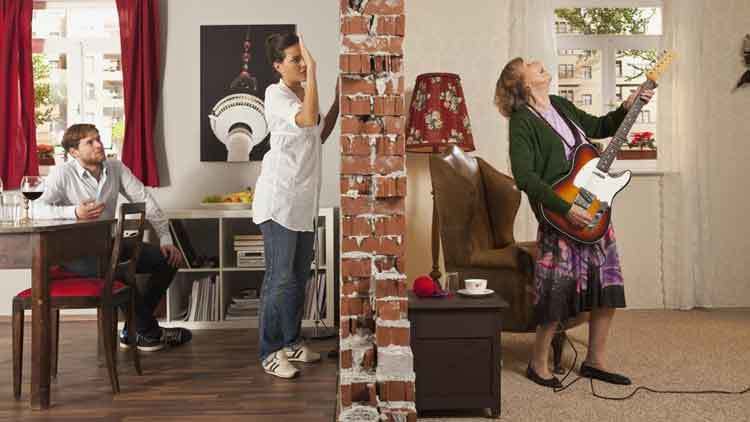How to Soundproof Office Cubicle
How to soundproof office cubicle? That is the question! Sound control is more important than ever! There was a time when workplace soundproofing was less of an issue, when CEOs were shut away in their own offices, doing their business, and the only sound in the main office was the typing of secretaries, good old days right?
That being said, have you ever had to work in a loud environment, or in a big source of noise pollution? Does your job require you to work in an open-plan office with cubicles? The office environments of today are vastly different from those of the past!

Different employees’ duties and requirements are always changing. Some employees may require constant communication with other team members, while others may require complete silence and concentration to do particular tasks. You may attempt a variety of cubicle noise solutions that will surely help you in achieving a level of cubicle noise reduction. Some of them are just listed below!
Why Are Offices so Noisy?
In most cases, a modern office is a huge, rectangular area with separate cubicles. While this concept is great for making the space more versatile, it has a significant influence on the degree of noise pollution. What is the reason behind this?
Sound waves, in a nutshell, move through the air and bounce off solid objects (learn more about the sources of noise here). Reflective surfaces, which are flat, solid surfaces that are good for sound waves, are abundant in offices. Sound waves are reflected so well off these surfaces because they’re also smooth, and solid, preventing the waves from flowing through the object. This causes reverberation and echoes in the room.
Sound waves can get magnified as a result of echo and reverberation, making noises louder and more disturbing. While you won’t always hear echoes in a crowded office, sound waves bouncing off solid objects will inevitably be heard. And, of course, it’s also worth noting that a room full of people is likely to be noisy at the very least!
So, How to Soundproof Office Cubicle?
These are a few strategies you may try if you’re looking for ways to minimize noise levels in your cubicle:
1. Seal All Gaps
For starters, you have to make every space you’re soundproofing as airtight as possible! Use a high-quality acoustic sealant to cover any gaps, holes, or places that might allow noise to leak in and out. You can ensure that your caulk stays in place for years by investing in a good caulk.
Pay special attention to areas around windows and door frames, as well as any wire and plumbing. Take your time with this step of soundproofing preparation. The remainder of your efforts will be useless unless you lay adequate and sturdy foundations.
You may also use something like Green Glue official website to seal these gaps. Green glue is a soundproofing adhesive that is mostly used for sealing purposes. It will quickly patch up any gaps and fissures with its specific sound-absorbing components. Because it is a very potent chemical, use it with caution. Make sure you’re also wearing your work gloves!
Video: How to seal gaps around a window
2. Soundproofing the Floors
A hard flooring surface, such as hardwood floors or ceramic tiles, can cause havoc in a working environment. The constant echoing noise these sorts of flooring make is the cause of this chaotic environment. These two solutions will surely help in making your cubicle a more peaceful working environment:
| Install vinyl floor | This is not the same vinyl floor that your grandparents had in their houses in the 1970s; it’s much different. Some of these flooring options can last up to 30 years. When deciding on the sort of vinyl flooring to use, make sure to consider one with an IIC rating. Vinyl is one of the soundproofing materials that will add mass to your floor, allowing noise to be trapped, making your office environment relatively quiet. |
| Add a carpet | It’s likely that your cubicle area is already carpeted, but if it isn’t, investing in a rug of some sort is an excellent option! Even if you already have carpeting, a rug can help to muffle the noise. Make sure that not only your cubicle has a rug, but that the carpet is put throughout the workplace as well because it is the foot traffic that causes the noise. Even just putting a strip of carpet outside your cubicle should help, as you’ll be reducing noise near to your position. It may be argued that this is preferable to doing nothing at all. |
Video: How to Soundproof a Floor – MuteMat® Installation
3. Soundproofing the Walls
| Make your cubicle wall higher | In a shared office environment, this may not be the most practical solution, but it is certainly one of the most effective! Because sound waves travel in straight lines, if you elevate your walls higher than head height, you’ve already eliminated a significant amount of noise pollution. While this statement is oversimplified, it is accurate in terms of our noise pollution concerns. When you make your walls taller, there is less space at the top for sound waves to escape through. Take a look at some acoustic room dividers to see what you should be looking for. Because they are more substantial than ordinary partition walls, they will also absorb a considerable amount of noise pollution. Obviously, this is a costly and invasive technique. Using taller (and more substantial) walls, on the other hand, is an excellent first step in making your office cubicle more soundproof. |
| Add mass to your wall | Adding additional mass to the walls of your cubicle is a simple but efficient way to reduce noise levels. Because sound is captured by the heavy surface, less sound will be able to reach your cubicle. However, this technique is less successful in really loud surroundings, so use it only if the present noise levels aren’t too terrible. Try something like moving blankets if you’re searching for a low-cost solution. Because they are thick and heavy, they will absorb some sound waves. Similarly, because their soft surface reflects less sound, they provide some acoustic treatment as well. Alternatively, some heavy drapes or noise-reducing curtains might be used. The principle is the same, but you won’t find drapes that are heavier than moving blankets. Try something like mass-loaded vinyl if you want to go all out and don’t care about how it looks. Because this material is particularly developed for soundproofing, it will significantly reduce noise levels in your cubicle. |
| Attach acoustic panels | Preventing noise and buzz from the rest of the workplace is critical, and walls, as the largest component of a cubicle office, pose the most difficult challenge in addressing another, much more serious issue: noise. Another thing you can do on your own makes acoustic panels, which are rather inexpensive. But, peace has no cost, right? Those acoustic panels, on the other hand, are sponge-like material blocks that can be readily connected to the walls. Because they are soft, sound does not bounce off of them as easily as it would off of a hard surface. You’ll be able to enjoy your newfound peace and quiet in your cozy little cubicle after they’ve been installed. |
Video: How to install acoustic insulation on the walls inside your house, apartment, or office?
4. Add Soft Furnishings
Adding some soft furniture to space is probably the least invasive way to reduce cubicle noise. The reason for this is that sound waves can’t easily bounce off soft furniture and are instead absorbed into the material.
This strategy also works with solid things that are heavy, such as a bookshelf (just like we mentioned in How to Soundproof a Dorm Room), because more surfaces for sound waves to reflect off will help them disperse faster. Consider including some of the following objects in your cubicle:
- Wall hangings
- Potted plants
- Cushions
- Drapes
Add as many soft items as possible to your cubicle, as this will substantially improve the acoustics. Obviously, this strategy does not lower the quantity of noise created, but it should make the impacts within your cubicle less obvious.
5. Alter the Office Set Up
Changing the office arrangement is an excellent way to work around the problem, especially if installing soundproofing materials isn’t possible. There are a variety of methods to do this, but one option is to combine the noisy cubicles together and place them apart from the quieter cubicles. While this will only lower a few decibels, it will make them less of a nuisance for individuals who are disturbed by it.
Another alternative is to create partitions between teams, which will help to reduce noise. You may also utilize some of the measures described above to successfully lower noise pollution levels (for example, by adding more soft furnishings).

6. White Noise Machines
Even though these machines are most commonly used to enhance people’s sleep at night, they may also be utilized to soundproof your cubicle. You might be curious as to how these machines operate. In essence, these devices will not be able to remove background noise.
You’ll still be able to hear it, but it won’t be as bothersome as it used to be. The machines emit neutral-frequency noises, which mask background noise by drawing your subconscious attention to their own non-disturbing sound. As a result, instead of being distracted by outside noise, you will be able to concentrate efficiently on your own work. White noise machines for offices are reasonably priced, and you might be able to create a pleasant working atmosphere with one!
In Сonclusion
If you work on a cubicle farm, you’re probably familiar with the difficulties of doing work in a noisy atmosphere. So, what we mentioned above are some of the easiest and most affordable ways to shield yourself from annoying background noise.
You’ll be able to limit sound as much as possible while also helping to shut it out within your own workstation if you follow these measures. Some of these will take a little more time and effort, but they’ll get the job done! Nonetheless, if you follow all of these instructions to the point, you should be able to create a pleasant soundproof atmosphere for yourself.


